The Trans-Siberian Railway is the greatest train journey in the world and one of the quintessential travel experiences. Travelling for days across thousands of kilometres and several time zones, you’ll get to see the gradual change in landscape, peoples and cultures as you go from the edge of Europe to the heart of Asia. There are three main routes on the Trans-Siberian Railway. The original railway, started in the late 19th century under Tsar Alexander III, runs across Russia from Moscow to Vladivostok on its eastern Pacific coast. The Trans-Manchurian turns south before Vladivostok into north-eastern China on its way to Beijing via Harbin. However, the most interesting and popular route for travellers is the Trans-Mongolian Railway (often confusingly called the ‘Trans-Siberian’). This route, opened in 1956, diverts south at Ulan Ude just east of Lake Baikal and journeys through Mongolia and into China, finishing at Beijing.
Location:
 China
China
 Mongolia
Mongolia
 Russia
Russia
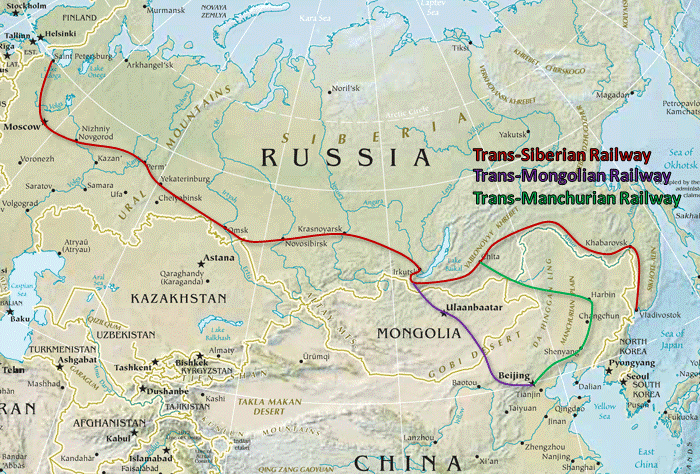
The Trans-Mongolian takes six days to travel the 8,000km from Moscow to Beijing but stopping to explore some of the main attractions on route is recommended (you will need a confirmed sleeping berth reservation for each section). The three capital cities � Moscow, Ulaan Bataar and Beijing, are each fascinating and totally distinct destinations, steeped in the long history of their respective countries and each adapting differently to the 21st century. However it's the stopovers at Lake Baikal and at a ger camp in the Mongolian countryside that are the true highlights of the trip � a chance to escape the confines of the train and appreciate their glorious scenery and isolation.
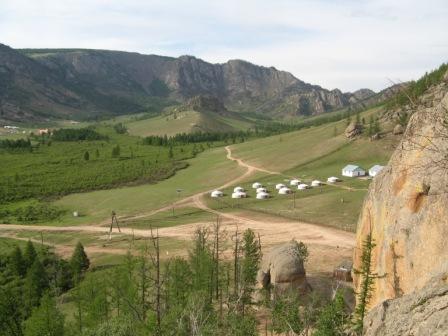
The train journey itself is of course a huge part of the experience. This is no bullet train - the train travels at approximately 50km/hour, giving you plenty of time to watch the scenery from the window and enjoy the slow pace of life on board. From Moscow, the train passes through the Ural Mountains, across the Siberian Taiga forests, around Lake Baikal, through the Mongolian steppes and past the Great Wall of China before reaching Beijing. Some of the real discoveries are on board though, as you meet Russian, Siberian and foreign travellers and share stories and vodka.
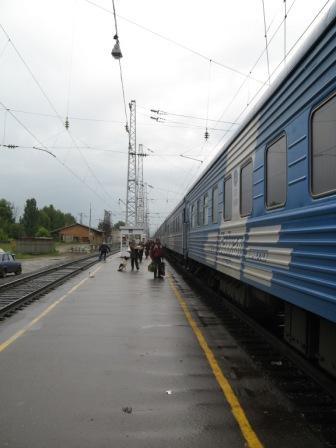
Conditions on board the train are basic but comfortable. This is a real working railway, not a luxury tourist trip. Compartments are either two-berth (first class) or four-berth (second class). Each carriage has 8 compartments, a toilet and wash-basin and a provodnista/provodnik who collect tickets and keep the carriage clean. There is a restaurant car on board but many travellers will but food from the babushkas on the station platforms � a samovar with hot water is in each carriage. The train keeps to Moscow time meaning by the time you reach Irkutsk there'll be a 5 hour difference between the train time and the actual time which can be a little disorienting. The train usually keeps to a punctual schedule and there are regular 20 minute stops at the major stations, allowing you to stretch your legs and restock your supplies.
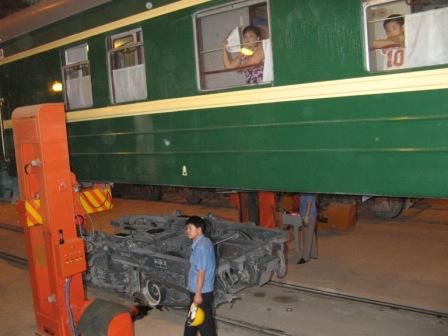
For most organised tours, the section from Moscow to Irkutsk will be the longest section, taking three nights and four days before arriving in Siberia. After stopping in Lake Baikal, the train heads south towards the Mongolian border. Getting through the customs and visa checks can be a long and tortuous process � visas for Russia, Mongolia and China must be obtained in advance of travel. You may be able to get off the train at the Russian border town of Naushki and stretch your legs around the station. Crossing the Mongolia-Chinese border is just as slow as the wheel bogies on each carriage need to be changed to accommodate the different railway gauge in China. It's all part of the experience though of travelling on the world�s greatest rail journey.
| Perm and Kungur Ice Caves | |
|---|---|
There's no particular reason to make a stop at the industrial city of Perm, but it is the base for exploring the nearby Kungur ice caves - 6km of passages that connect 100 grottoes and 60 lakes and filled with ice stalagmites and stalactites and frozen waterfalls. | |
| Ekaterinburg | |
|---|---|
Ekaterinburg is the capital city of the Urals, founded by Peter the Great in 1723 as a gateway to the mineral riches of the Urals and now a major staging post on the Trans-Siberian. It is most famous for being the site of the murder of the last Tsar, Nicholas II, and the Romanovs in 1918. An impressive new cathedral, the Cathedral of Spilt Blood, has been built on the site where they lived their last months. In the forest where they were buried, a monastery and six traditional wooden churches have been built around the graves, now a Russian Orthodox pilgrimage site. Aside from all that history, Ekaterinburg is a laid back city with a good cafe culture that makes an ideal spot to break the Moscow to Irkutsk leg of the journey. Also, close to Ekaterinburg lies a white obelisk monument which marks the border between Europe and Asia, giving you a chance to stand on two continents simultaneously. | |
| Omsk | |
|---|---|
Omsk is Siberia's second city and was founded in 1716 as a place of exile for criminals and political prisoners. Its most famous resident of that time was the writer Fyodor Dostoyevsky who spent four years of hard labour here and recounted his experiences in his book 'Buried Alive in Siberia'. You can learn about this history at the Literature Museum and the History Museum. | |
| Novosibirsk | |
|---|---|
Novosibirsk is Russia's third largest city and the largest in Siberia. Built on the River Ob, its attractions include the silver domed Opera and Ballet Theatre, the largest in Russia, the cathedral and the old houses by the river. | |
| Irkutsk | |
|---|---|
After three nights on the train from Moscow, the city of Irkutsk near Lake Baikal is a welcome stop. Many will head straight to the lake 65km away but it's worth spending a little time exploring the city. Founded over 300 years ago, Irkutsk has become an important commercial and administrative centre. It was also a place of exile, most famously for the Decembrists, 19th century aristocratic revolutionaries who tried to overthrow the Tsar. Some of the old homes of these exiles still exist, including the House Museum of Mariya Volkonskaya, one of the Decembrists wives who followed him into exile. The rest of the town is an interesting mix of traditional Siberian wood cottages and Soviet style buildings and monuments. | |
| Ger Camp in the Mongolian steppe | |
|---|---|
The highlight of any trip to Mongolia, or stopover on the Trans-Mongolian Express, is to spend a few days in the Mongolian countryside living in the traditional felt Ger tents. Three-quarters of the Mongolian population still live in gers, many of them moving nomadically several times a year. Despite this, they are very comfortable, usually housing four people and with a location that's unbeatable. Whether in the drier landscapes of the Gobi in the south or the more lush green hills and valleys of the steppes in the north, the scenery is pristine, untouched and spectacular. Mongolia is the least densely populated country on earth and the isolation is very evident - you will feel completely removed from every aspect of the modern world. The surrounding countryside is perfect for exploring on foot or on horseback. There is also the chance to meet the local herdsmen, learn about their nomadic lifestyles and perhaps have a go at their traditional sports like archery and wrestling. Mongolia offers one of the most unique, relaxing and memorable travel experiences in the world. | |
| Ulaan Bataar | |
|---|---|
Ulaan Bataar, the capital of Mongolia, is a bizarre and eclectic city, combining traditional Mongolian features with decaying communist architecture. Big apartment blocks exist hand in hand with traditional ger tents. The city is centred on Sukhbaatar Square, on which lies the parliament and statues of Genghis Khan and Damdin Sukhbaatar, the independence hero. A trek up to the summit of Zaisan Hill offers panoramic views of the city and a chance to examine the Soviet war memorial. Back in town, there are several excellent museums to learn about Mongolia including the Museum of Mongolian History which recounts the country's fascinating story, particularly the reign of Genghis Khan, as well as the Museum of Natural History with its excellent dinosaur display and the Fine Arts Museum. The Gandan Monastery is a highlight of Ulaan Bataar, Mongolia's largest and most important monastery while Bogd Khaan Palace was the winter palace of the last king of Mongolia. Don't leave town without trying a Mongolian barbeque washed down with Chinggis Khan beer and experiencing Mongolian culture at a performance of traditional dance and throat singing. | |
| Beijing | |
|---|---|
Like the country of which it is capital, Beijing is a vast city with a hugely rich history and a wealth of attractions in addition to the Forbidden City, Temple of Heaven, Summer Palace and a trip to nearby sections of the Great Wall (detailed in other entries). These include Tiananmen Square, the world's largest public square and site of Chairman Mao's mausoleum and his portrait above the Gate of Heavenly Peace. The hutongs are the maze of historical lanes and alleyways of Beijing, surrounding the Forbidden City, which offer a great insight into the traditional life of Beijing's residents. Also worth checking out are the many fascinating shops and markets, a night at the Beijing Opera or the astonishing acrobatics shows and not forgetting the chance to sample Beijing's cuisine, particularly the famous Peking Duck. | |
Travel to Trans-Mongolian Railway
Organised group tours: Click here to see 3 tours to Trans-Mongolian Railway which may include Trans-Mongolian Railway.
Further Exploration for Trans-Mongolian Railway



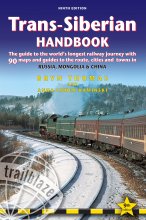 |
Trans-Siberian Handbook May 2014 (9th ed.), 528 pages
|  |
Trans-Siberian Railway Apr 2015 (5th ed.), 432 pages
|
 |
The Trans-Siberian Railway: a traveller's anthology (2nd ed.), 312 pages
|














